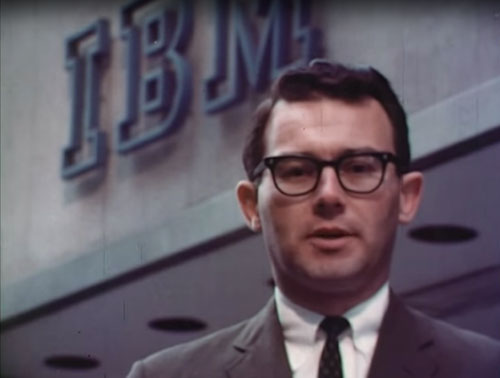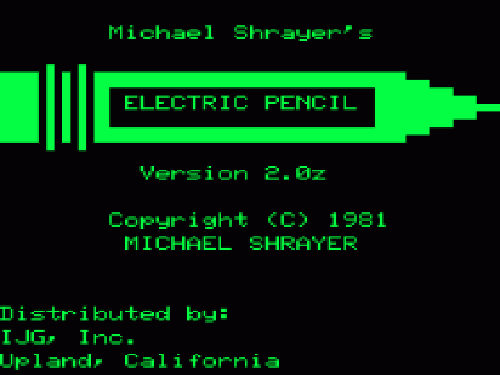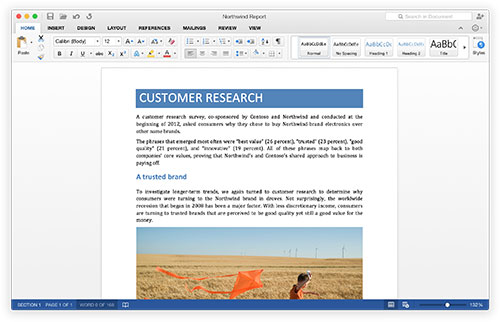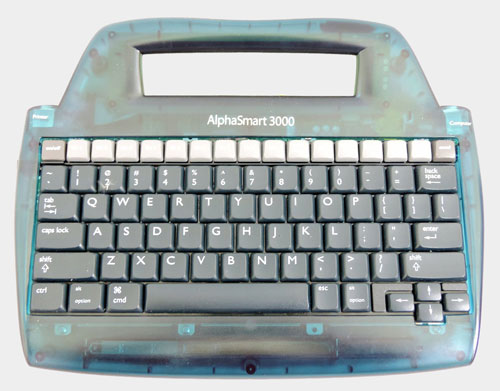Bare-Metal Writing
Over the decades, word processors have continually gained new features that get in the way of the ultimate goal: writing. How do we get back to that goal?
“The public’s exposure to the concept of word processing took place almost simultaneously with the spread of the the novel term food processor, a term introduced to the US in 1973 by Cuisinart to describe a multifunctional kitchen device able to chop, blend, and mix.”
— Thomas Haigh, a professor at the University of Wisconsin-Milwaukee, noting an interesting parallel between the word processor and a common device you’ve probably seen in your kitchen. Decades before Microsoft Word first hit the scene, word processing was closely associated with physical devices that could store information, not single apps that allowed you to type. The term was affiliated with a business approach before it was ever tied to a computer. “Word processing was already the center of a thriving industry well before the personal computer gained general acceptance in business,” Haigh added.

The first device called a “word processor” inspired a bizarre Jim Henson/Raymond Scott collaboration
“Machines should work. People should think.“
One look at the logo that Paul Rand created for IBM could tell you that the company, despite its straight-laced business industry chops and industrial prowess, was not afraid of doing something bold or experimental to stand out.
And when the company needed to promote the first typewriter that relied on reusable storage, the MT/ST (Magnetic Tape/Selectric Typewriter), it worked with a guy who at the time was best known for coffee commercials, and teamed him with another guy who was known for soundtracking Looney Tunes.
That meant Jim Henson was in charge of the vision of selling this paperwork-saving product to the masses—and he was teamed up with Raymond Scott, who was by this time already a living legend.
Together, they came up with something that could have only come out of 1967. Scott stepped up with a minimal, blip-heavy electronic soundtrack, and Henson followed suit with the visuals for “Paperwork Explosion,” a five minute clip that combines apparent stock footage of paper, clocks, space shuttles; Mad Men-era office drones, staring directly in the camera and repeating robotic lines; and soundtrack-emphasized quick cuts.
Three minutes in, in the most banal, droning voice possible, a man in glasses shows up on the screen, and says, verbatim: “IBM can help you with the time it takes to do the paperwork.” It is not cheerful. It is unsettling.
The video was with some precedent—Henson was known during this time for working with corporate giants and creating experimental art that spoke to a brand’s importance. But in a lot of ways, “Paperwork Explosion” was more impactful because it had needled on such a major pain point for office workers in 1967.
One fascinating footnote here: In some ways, the approach is very similar in tone to Apple’s famous 1984 commercial, but also its even darker Lemmings commercial, both of which were interpreted as rips on IBM.
That latter ad introduced the Mac’s office project, an early attempt at introducing local-area networking that played a key role in the beginning of the desktop publishing revolution—a place where modern word processors have been stuck ever since.
Sounds like we’re in need of another paper explosion.
“Before I started working on a computer, writing a piece would be like making something up every day, taking the material and never quite knowing where you were going to go next with the material. With a computer it was less like painting and more like sculpture, where you start with a block of something and then start shaping it.”
— Author and journalist Joan Didion, explaining to Salon in 1996 how the word processor changed her writing style. The addition of being able to easily edit and remove information? That was a significant improvement over typewriters or even pen and paper, and it changed the way people wrote. The literary world had concerns, however, notes Matthew Kirschenbaum, a University of Maryland professor who wrote a book titled Track Changes: A Literary History of Word Processing. “The key word here is perfection,” Kirschenbaum told The Boston Globe. “Word processing created a very effective illusion of the perfect page. But that meant all material traces of the author’s labor were absent.”

Five key moments in word-processor history
- The 1975 creation of the Electric Pencil, the first commercially available word processor specifically written for a home computer, was so early to the game that the TRS-80 didn’t support lowercase characters—which meant the manual for the software had to explain how to modify the hardware for the machine to support lower-case characters. Jerry Pournelle, a science fiction author and very early blogger, was among the first to write a book using Electric Pencil, authoring Oath of Fealty with his writing partner, Larry Niven.
- WordStar was a far better tool for writing. The word-processing tool, which first came to life in 1978 on the CP/M, was very flexible despite the fact that some early computers did not always have the function keys that we expect today. Its flexibility helped define generations of power users. As a way to highlight its quality, it’s worth noting that Game of Thrones scribe George R.R. Martin still uses WordStar 4.0 to write his books.
- The folks at Xerox PARC invented a lot of stuff in the ’70s that would later become incredibly common in modern computers. One of those things was copy-and-paste, which Larry Tesler added to the Gypsy editor. The editor, one of the first “modeless” text editors, also supported the mouse. “Gypsy was the very first thing outsiders in the company understood,” Tesler recalled for the book Fumbling the Future, a 1999 tome about Xerox PARC. It later inspired a lot of word processors.
- WordPerfect, the piece of software that turned word-processing into big business, came to life much the same way Netscape did—it was based on work originally done at a university, Brigham Young University to be exact. (That’s right, the Mormons brought us word processing.) The app, released to the public in 1980 after a few years of incubation at BYU, differed from WordStar in an important way—it kept the key commands off-screen, putting the focus on the words instead. (Many editors are still trying for this ideal.) Gary North, the libertarian-type who I highlighted in my recent piece about Y2K hoarders, was an active WordPerfect user until 2011, and some lawyers still love it.
- And yes, credit where credit’s due: Microsoft’s October 1983 release of Multi-Tool Word, eventually shortened to Word, added an important tool to the word-processing workflow: the mouse. Eventually, that addition would lead to its full blossoming as a GUI-based editor that everyone in every office uses.

For all they’ve gained, what have modern word processors lost?
What’s my problem with word processing—the problem that has led me to write this post? Well, it’s comes down to a fundamental belief on my part: In some ways, modern editing tools have failed to shake the formidable legacy they created for themselves.
For decades, word processors evolved with printers, taking on features like typography and layout, but the problem is that printers eventually became less important as a way to communicate—and a lot of modern word processors (looking at you, Word), never took the time to change course when the internet became a thing.
And as a result, they’ve become about everything except writing. You have to worry about the appearance of the content as well as the formatting. You’re constantly getting pulled out of your zone, perhaps less now than in the ’90s, but still enough where it feels like you’re fighting the software even to get a word on the page.
And the worst part: Despite the fact that the odds are way higher that you’re going to throw your document on the internet than on a sheet of paper, the entire structure of the software—even for internet-native approaches like Google Docs—is designed for the end goal of printing. If you try to export the document in an internet-compatible format like HTML, you get a mess.
(Markdown editors, like the one I’m still using now, are a bit better on this front. I particularly admire the experimental approach taken by the online tool Gingko. But again, perfection is hard.)
The thing we’ve lost with modern word processors is simplicity. There are more layers between us and the page than ever, and the story barely even has room to breathe. I want as little between me and the article I’m writing as possible, and I’m sure other writers have to feel the same way.
I want to feel bare metal when I write. That’s why I dislike Microsoft Word.
Last year, a blogger named David Kadavy wrote a love letter to a piece of hardware called the Alphasmart 3000—essentially like the typewriter-style word processors that were popular in the ’90s, without the typewriter.
The product, which was produced well after Microsoft Word became the de facto standard, is considered by Kadavy the perfect writing tool because of what it doesn’t do: It doesn’t support the internet, it has a tiny screen, it can barely be connected to a computer, it sucks at editing, and it only produces a text file.
“Productivity is all about mind management, not time management, and this pile of plastic helps me keep my mind in the right brain state for writing—and writing only,” he wrote.
Around the time Kadavy wrote his post, a group of Kickstarter users was just putting the finishing touches on a product called Freewrite, which effectively does the same thing, except at a cost of $500 a pop. (It has Wi-Fi enabled cloud support, which is the one big difference.)
Mashable called it “pretentious hipster nonsense,“ and I’m inclined to agree.
But I have to wonder if the desire for bare-metal writing is leading some people to do very desperate things. Are we so far from the distraction-free ideal that we’re willing to spend the cost of a round-trip plane ticket on a device that does almost nothing?
That’s not the way back home to the ideal of WordPerfect 5.1, but we do need to rethink the way we write, and whether our tools make sense anymore.
Jim Henson’s bizarro-world film for IBM from 50 years ago, the one that introduced the concept of the word processor to the public, said it all: “Machines should work. People should think.”
:format(jpeg)/uploads/tedium081816-1.gif)
/uploads/tedium081816-1.gif)


/uploads/ernie_crop.jpg)